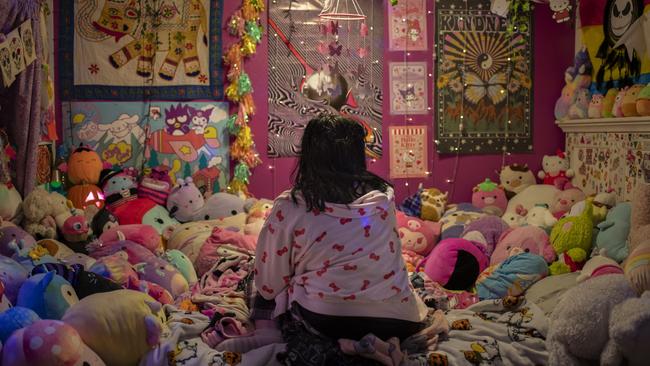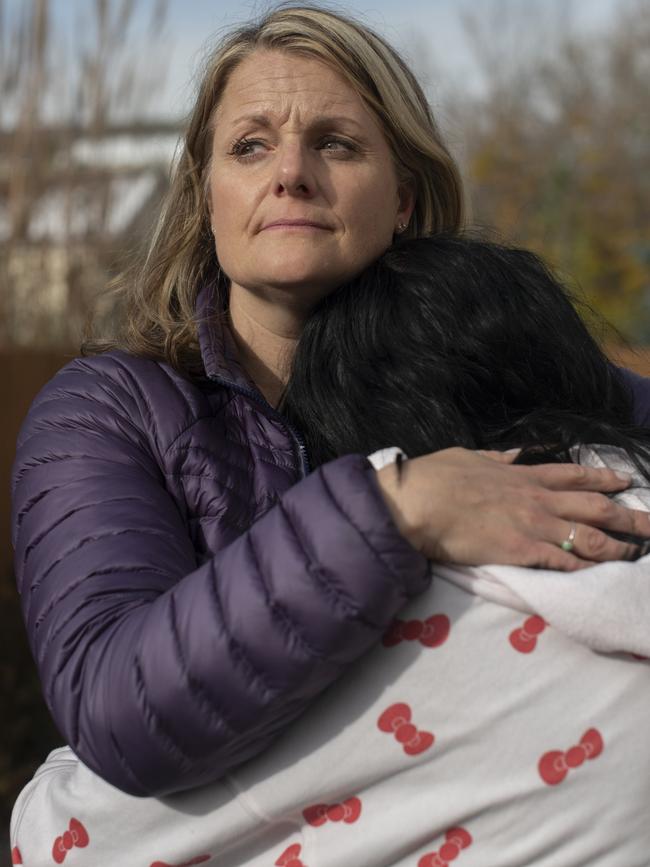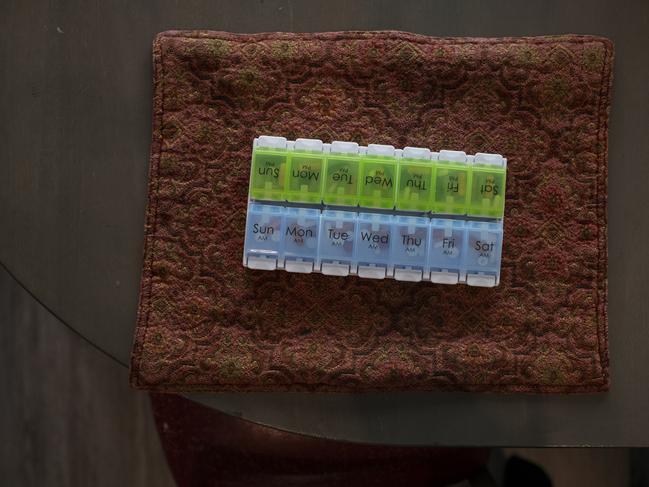More teens are using dangerously potent pot for intense highs
Health authorities are sounding the alarm as teenagers present to emergency rooms with seizures, cyclical vomiting or psychosis. A mother explains: ‘It was like someone replaced my daughter with someone else’.

Heidi Lawrence’s daughter was 14 when she began dabbing – heating and inhaling the fumes from powerful globs of marijuana extract. By 15, the girl couldn’t resist the quick, intense highs and was dabbing every half-hour from school bathrooms to her bedroom.
Smoking the potent cannabis concentrates “has almost broken her brain”, said Lawrence, of Longmont, Colorado.
Dabbing has emerged in recent years as a popular way to consume marijuana, especially among youths. But it is dangerous. Like other new forms of marijuana use that have proliferated in recent years, dabbing involves highly potent concentrates of cannabis.
Health authorities are sounding the alarm, warning that dabbing could turn users into addicts and is sending teenagers to emergency rooms with seizures, cyclical vomiting or psychosis. Some users and doctors call a cannabis overdose, with the accompanying sweaty nausea and disorientation, a “green-out”, a term believed to be a play on “blackout”.
“People are consuming extremely high doses of THC”, the psychoactive component of cannabis, said Dr Nora Volkow, director of the National Institute on Drug Abuse. “People can become psychotic.”
Now 17 years old, Lawrence’s daughter has been hospitalised and sent to inpatient rehabilitation programs several times for cannabis addiction and mental health problems. She told her mother that dabbing filled her with rage and despair and intensified her desires to cut or kill herself.
“I just couldn’t figure out what was going on,” Lawrence said. “It was like someone replaced my daughter with someone else.”

Cannabis companies said users must exercise caution. “People need to be responsible, just as they would with alcohol,” said Aaron Smith, chief executive of the National Cannabis Industry Association in the US, a trade group.
Dabbing developed out of the quest – first by cannabis enthusiasts in the 1960s and then medical marijuana patients in the 1990s – for a quicker and stronger effect. Users heat up sticky concentrates extracted from marijuana plants, usually in a bonglike glass rig or a vape pen.
The heat vaporises the cannabis concentrates, or dabs, so users can then inhale the drug.
Dabs have much higher levels of tetrahydrocannabinol, or THC, than most joints. Many cannabis concentrates contain between 70 per cent and 90 per cent THC, compared with the 4 per cent that joints in 1995 had and 16 per cent in 2022, according to the National Institute on Drug Abuse.
Since states began legalising recreational marijuana use, a number of high-potency THC products have gained popularity, from vapes to edibles and concentrate-infused joints. THC-extract products now constitute about half of the US market, up from a fifth a decade ago, said Jonathan Caulkins, who researches cannabis policy at Carnegie Mellon University.
Dabs appeal to youths because the products have little odour, making it easier to consume them in a locker room or bedroom without tipping off an adult.
About 20 per cent of cannabis users between the ages of 12 and 34 reported dabbing in the past month, compared with 10 per cent of those 35 years and older, according to National Survey on Drug Use and Health data from 2022.
Dabbing has gained popularity so quickly that researchers are scrambling to understand the health impacts, such as the effects that high-potency THC has on the lungs, heart and memory.
Early research suggests potential harms. A study published in 2019 in Lancet Psychiatry, for example, found that people who used higher-potency THC daily were at higher risk of developing psychotic disorders.
Adolescents who chronically use cannabis are more likely to struggle in school and experience depression, according to studies. At the same time, cannabis use in adolescence is associated with changes in the brain that aren’t as prevalent in adult users.
To reduce the risks, Connecticut and Vermont have capped THC levels. In October, an expert panel convened by the California Department of Public Health said the state should establish a limit.
In Colorado, a state-funded public-relations campaign aims to warn teens and pregnant women away from high-potency cannabis.
The state is also paying for digital ads and a website with a chatbot to answer questions, and exploring putting cannabis warnings in public schools, said Gregory Tung, an associate professor at the Colorado School of Public Health who is helping to direct the campaign.
The public “doesn’t have a good perspective or a clear understanding of the potential harms of cannabis use”, Tung said. “Everybody is playing catch-up. The market has grown and changed so fast.”

Sarah Hudock, a mother of seven from Pittsburgh, said she and her husband confiscated weed from one of her sons when they caught him smoking it at age 17, but they mostly regarded it as typical teenage behaviour, a familiar rite of passage.
They didn’t realise how much two of their sons were using, and had no idea that they were dabbing. Her older son would later tell Hudock that he would use up a dab pen advertised as containing 400 doses in as little as two days.
Both brothers, now in their 20s, had psychotic breaks and have attended several inpatient rehabilitation programs for their cannabis use, Hudock said. She and her husband remortgaged their home and tapped their retirement savings to pay the hundreds of thousands of dollars for their sons’ treatment.
“It’s really hard to fight a young person when they think everybody can do it, it’s medicine,” Hudock said. “They thought there was no harm.”
Lawrence’s daughter bought dabs and other drugs from a dealer via Snapchat, and dabbed using vape pens and other devices. For a while, she used a minitorch to heat a specially shaped glass straw known as a nectar collector to inhale the fumes.
Lawrence began to find metal straws and sheets with burn marks on them and realised her daughter was addicted. She sent her to an inpatient rehabilitation program, but the lessons didn’t stick.
By age 15, Lawrence’s daughter felt that she couldn’t eat or sleep well without inhaling cannabis first. She often vomited after waking up in the morning, a side-effect that can come from weed known as cannabis hyperemesis syndrome.
She lost interest in ballet, sewing and her other hobbies.
She got angry, punching holes in the walls of her bedroom. One day, when her mother said she couldn’t go see a friend, she kicked the door of her bedroom and threw an object at her mirror, breaking it.
Lawrence’s daughter was sober over the summer, but recently relapsed. She goes to therapy, and recently got a french bulldog puppy that the family named Wall-E.
Lawrence is glad to have honest communication with her daughter about drugs now, but knows her struggles aren’t over.
“We’re still in the thick of it,” she said.
The Wall Street Journal
If this story has raised issues for you, contact Lifeline on 131 114.

To join the conversation, please log in. Don't have an account? Register
Join the conversation, you are commenting as Logout